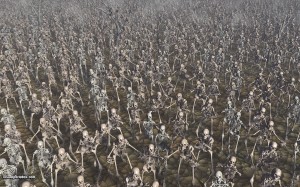 The party’s candidate for Duke, Carl the Half-elf Paladin, was invited to speak before the Parliament of Peers during last week’s session. While there he discovered evidence that someone was planning to blow up High Hall and all Members of Parliament with it. At the same time Ravengard had ordered mass executions of hundreds of criminal, many of whom did not deserve a death sentence if any punishment at all.
The party’s candidate for Duke, Carl the Half-elf Paladin, was invited to speak before the Parliament of Peers during last week’s session. While there he discovered evidence that someone was planning to blow up High Hall and all Members of Parliament with it. At the same time Ravengard had ordered mass executions of hundreds of criminal, many of whom did not deserve a death sentence if any punishment at all.
The PCs had to make hard choices about where to intervene, deciding in the end to split their efforts. Although the some PCs managed to save the Members of Parliament, High Hall was destroyed. The rest of the party successfully freed 300 “criminals” sentenced to death thereby stopping the pubic executions.
We had a packed house at Harry T North in Toronto. We had a table of seven and two tables of six. At my table were the following familiar faces: Carl the Half-Elf Paladin, Dwarf Fighter, Human Monk, Elf Mage, Human Cleric and Warforged Fighter.

